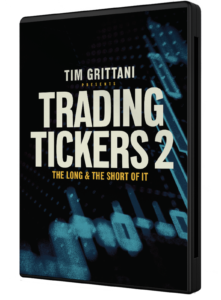But if you really felt that way, you probably wouldn’t be reading this … right?
If you only consult yourself for advice … how will you know if you’re making mistakes? By losing money?
What if there was a way to catch those mistakes before taking big losses?
I think most newbies should look for a mentor — an older (or wiser) teacher who you can trust to help guide you through your trading journey.
If I’d never joined Tim Sykes’ Trading Challenge — and absorbed his wisdom like a sponge — I wouldn’t be where I am today (worth over $3.5 million).
I was lucky to discover Sykes’ teachings — and even luckier that he took me under his wing.
But that was more than 10 years ago. These days, we both have too many students to give everyone individual lessons.
That’s why it’s so important to learn from multiple traders.
Seek not one, but a few trusted mentors … People who have proven their consistency and skill at trading the stock market.
I’m not suggesting that you copy other people’s trades or chase alerts. (Don’t do either of these things!)
Instead, pick the specific parts of other traders’ strategies that you identify with and implement them into your playbook.
I’ve learned so much from other traders over the years … and some of the tricks they’ve taught me have been huge game-changers.
Read on to learn two of the best ideas I’ve ever learned from other traders…
Tip #1: Tim Bohen’s 3-Item Checklist
I met Tim Bohen over a decade ago when we were both new students in the Trading Challenge.
I immediately noticed that Bohen was a standout trader in the class. And I specifically loved a certain approach he had for deciding which stocks to trade…
He calls it ‘The 3-Item Checklist’ — volume, chart, and catalyst.
Let me explain…
- If a setup doesn’t show elevated volume — pass.
- If a setup doesn’t display the technical indicators he looks for in a chart — pass.
- And if a setup doesn’t have a major news catalyst — pass.
However, when Bohen finds a setup that checks these boxes — he knows it’s time to get aggressive.
I took ‘The 3-Item Checklist’ and ran with it in my trading career. And let me tell you, it works WAY more often than it doesn’t!
By focusing on stocks that check off the three items on the list, you’re setting yourself up for better potential trades.
So it probably goes without saying that whenever Bohen unveils a new strategy, I pay close attention. And so should you…
Well, guess what? We’re all in luck! Next Thursday, April 21 at 8 p.m. Eastern, Bohen is hosting his 100% no-cost 2 p.m. Cash Appointment Summit!
Learn everything you need to know about the unusual pattern that has the potential for $1,000 or more … in under an hour! Click here to save your spot NOW!
Tip #2: Tim Sykes’ First Red Day Pattern
Even before I’d developed my put trading strategy, I was always interested in shorting parabolic runners.
But when I joined the Trading Challenge and Sykes explained the first red day pattern to me … it all finally clicked.
He told me to keep it simple. Wait until a chart hits the first red day (after a multi-day ramp of green days) — then make my move.
If you look at the big picture, the first red day pattern works logically…
After a long string of higher-priced closes, the first red day comes like a knife in the heart of the bulls.
It’s a crushing psychological blow, which is why it’s also a prime strike zone for loading up puts.
Additionally, the first red day gives you confirmation that the chart is starting to crack.
Is this pattern a guarantee that the chart will drop 20% the next day? Of course not.
REMEMBER: There are no guarantees in the stock market. Even Warren Buffett has no idea what will happen next.
But the first red day is one of the best bearish indicators out there. It can potentially give you a clairvoyant glimpse into future price action.
Take it from me. I’ve traded this pattern more than any other in my trading career — and now I’m a millionaire because of it.
And I never would have learned about the first red day if it wasn’t for Sykes’ mentorship — and my general openness to learning from other traders.
Final Thoughts
There’s a lot to learn in the stock market … too much for any trader to discover all on their own.
Open your eyes to what other traders are doing and learn from them.
You never know … If you learn from great traders, you just might stumble upon a strategy that changes your entire life.



